From Witches Broom to Silk Buttons, explore the world of plant galls and discover species you could encounter across the North East.
Galls are curious growths produced by plants in response to the activity of another organism, namely fungi and invertebrates. Galls come in a range of forms, from no more than a bump to structures earning the names of ‘Tongues of Fire’, ‘Sputnik’ and ‘Robin’s Pincushion’. Forming on stems, leaves and flowers, galls can be found on a variety of plants. Some galls are caused by insect larvae, with the gall providing a safe place for the larvae to develop. Focusing on those found on Oak leaves, explore six wasp galls that can be encountered during the autumn months in the North East.
Six plant galls in the North East
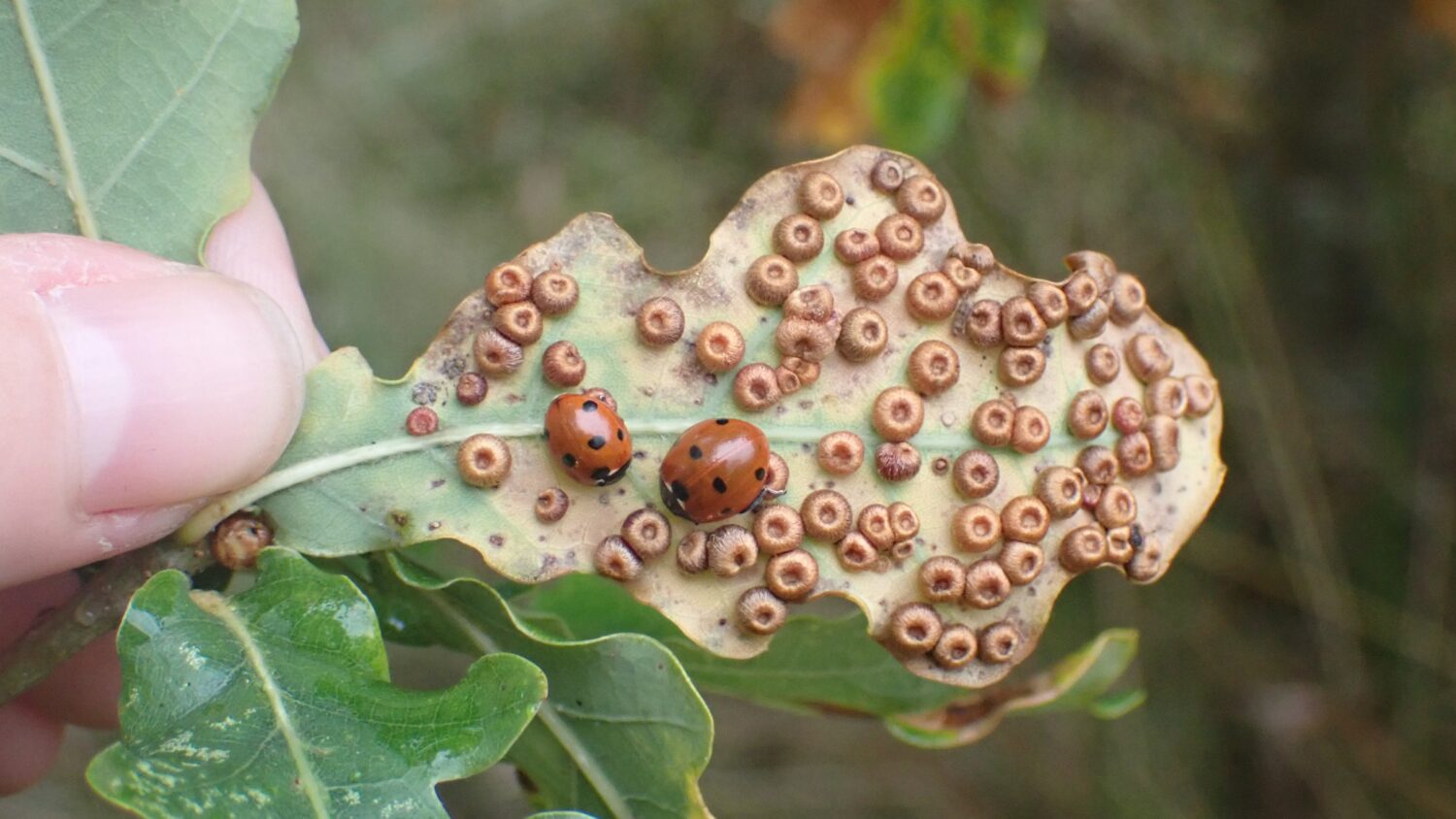
Silk Button Gall
Found on the underside of Oak leaves, Silk Button Galls are small brown discs or ‘buttons’ covered in gold hairs.
Caused by a small wasp no more than 2.5mm in length, each gall contains a developing wasp. Hundreds of these galls can be found on Oak leaves.
The wasp remains in the gall throughout the winter, emerging as an adult in the following spring.
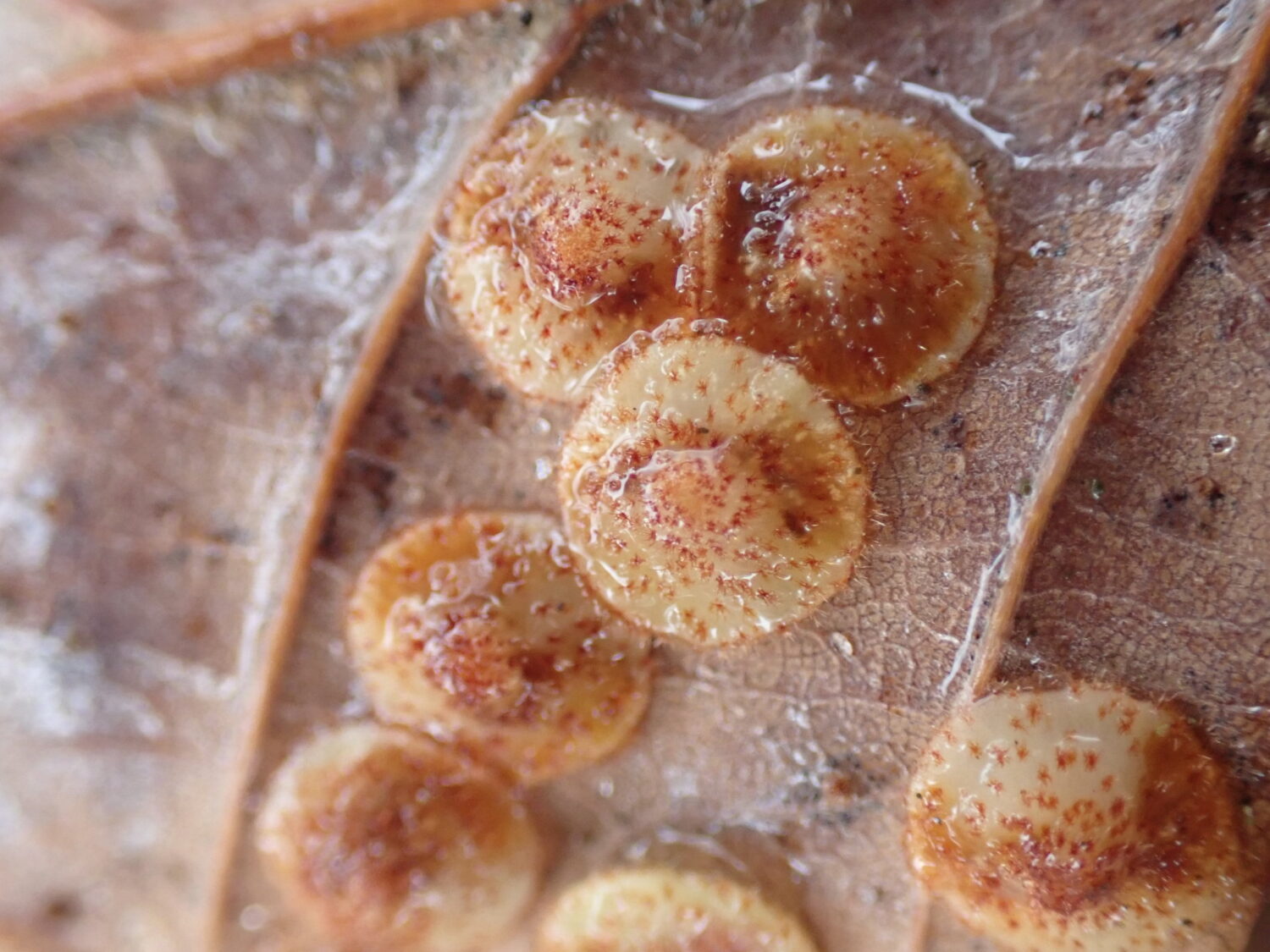
Common Spangle Gall
These brown, disc-shaped galls are found on the underside of oak leaves.
Many hundreds can be found on the same leaf, each containing a developing wasp.
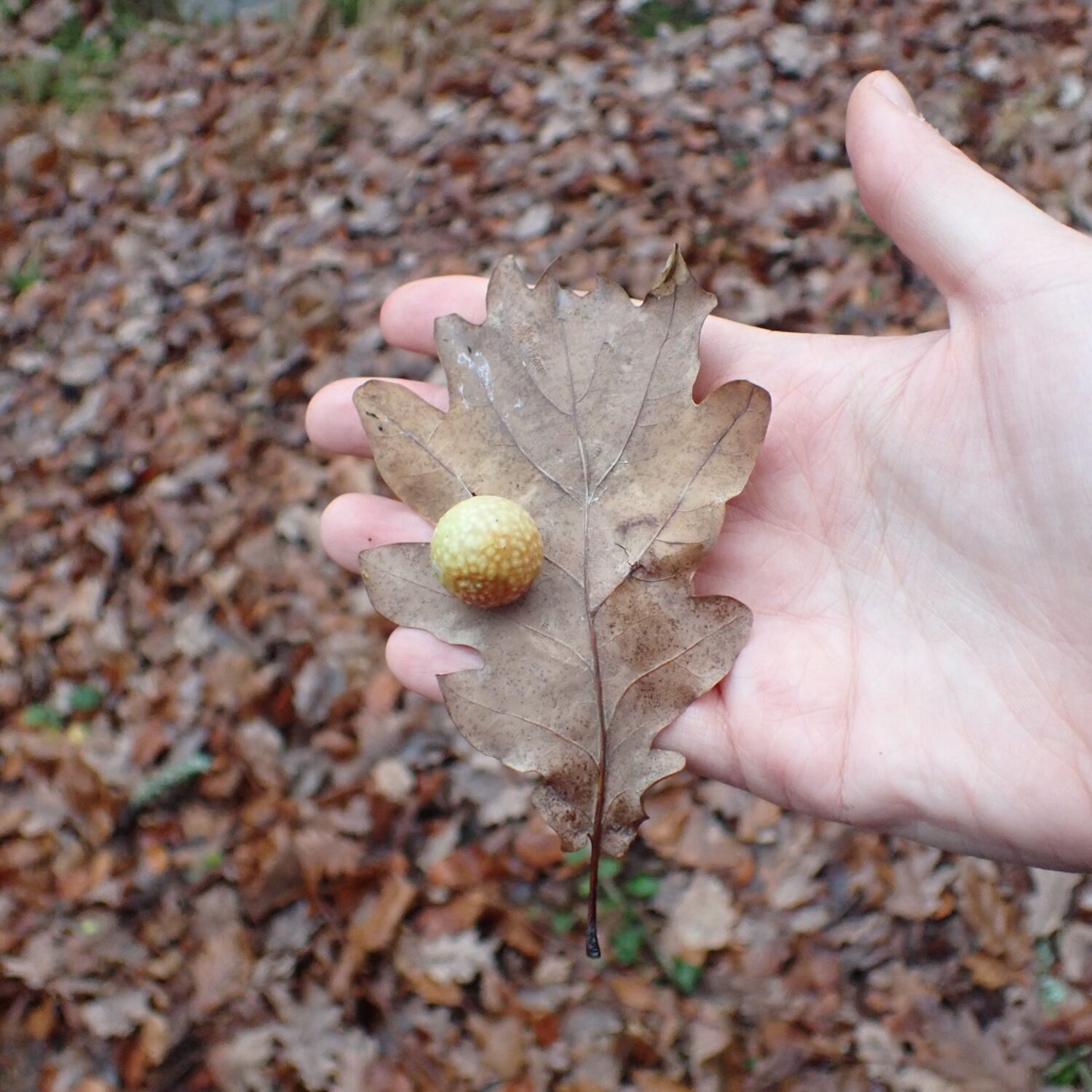
Cherry Oak Gall
Caused by a small black wasp, this large spherical gall is yellow-green suffused with red. They can be warty or smooth, depending on what species of Oak they are growing on.
These galls form on the underside of Oak leaves.
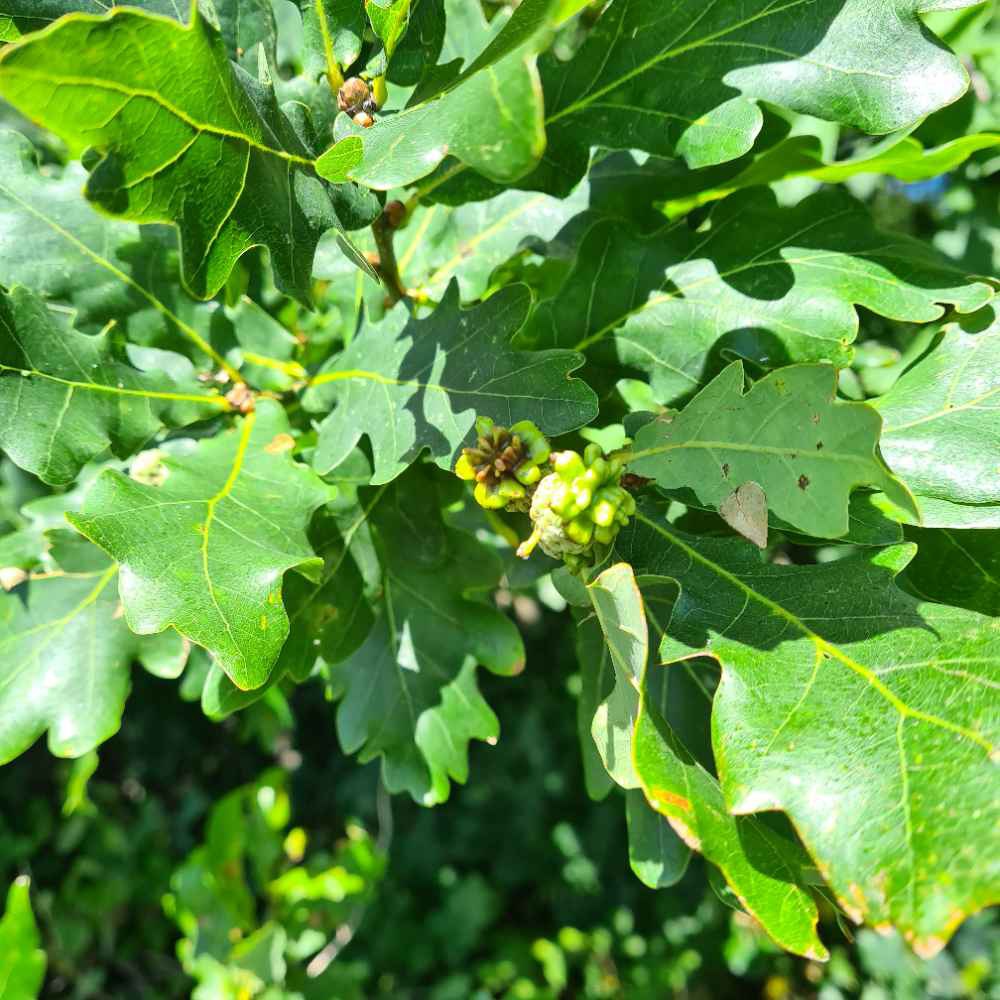
Oak Knopper Gall
Formed by a chemically induced distortion of growing acorns, Knopper Galls are found on the acorns of various oaks.
First arriving in Britain in 1960s, this gall wasp is a relatively recent arrival, and is now found throughout England.
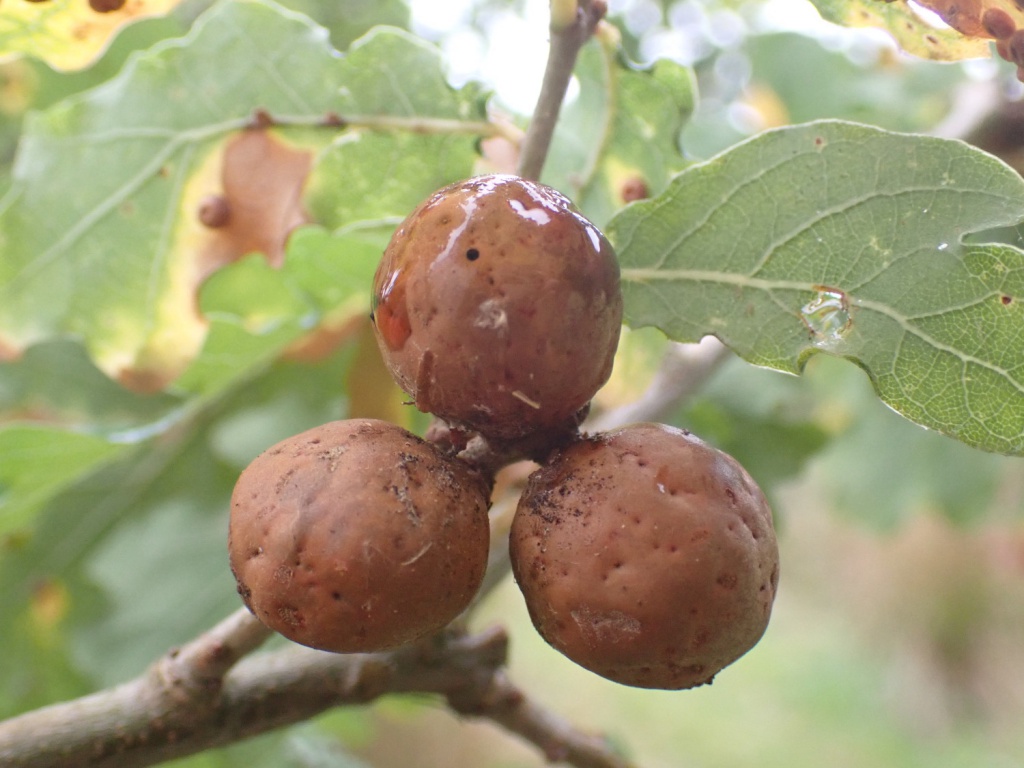
Oak Marble Gall
Also known as ‘Oak nuts’, a tiny wasp produces brown marble-like growths on Oak branches. Inside each gall is a developing wasp.
Emerging in autumn, emergence holes created by the adults can be observed.
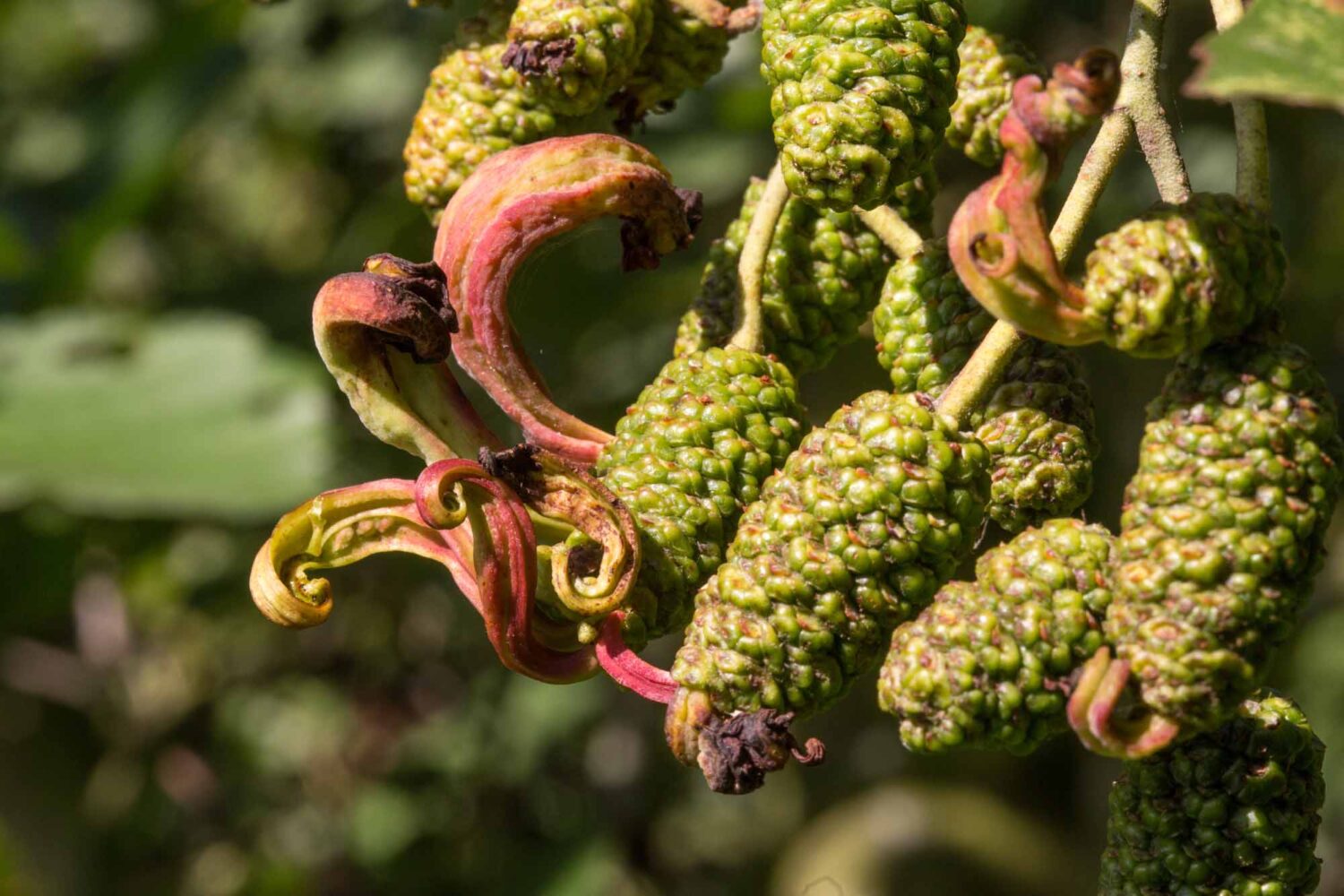
Recording Plant Galls
Autumn is a great time to observe and record plant galls. The British Plant Gall Society encourages the study of plant galls in the British Isles.
Full of helpful resources, the Society website can help you identify and record plant galls.
You can also follow the Society on Twitter (@britgalls) and Facebook (search British Plant Galls)